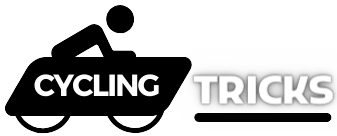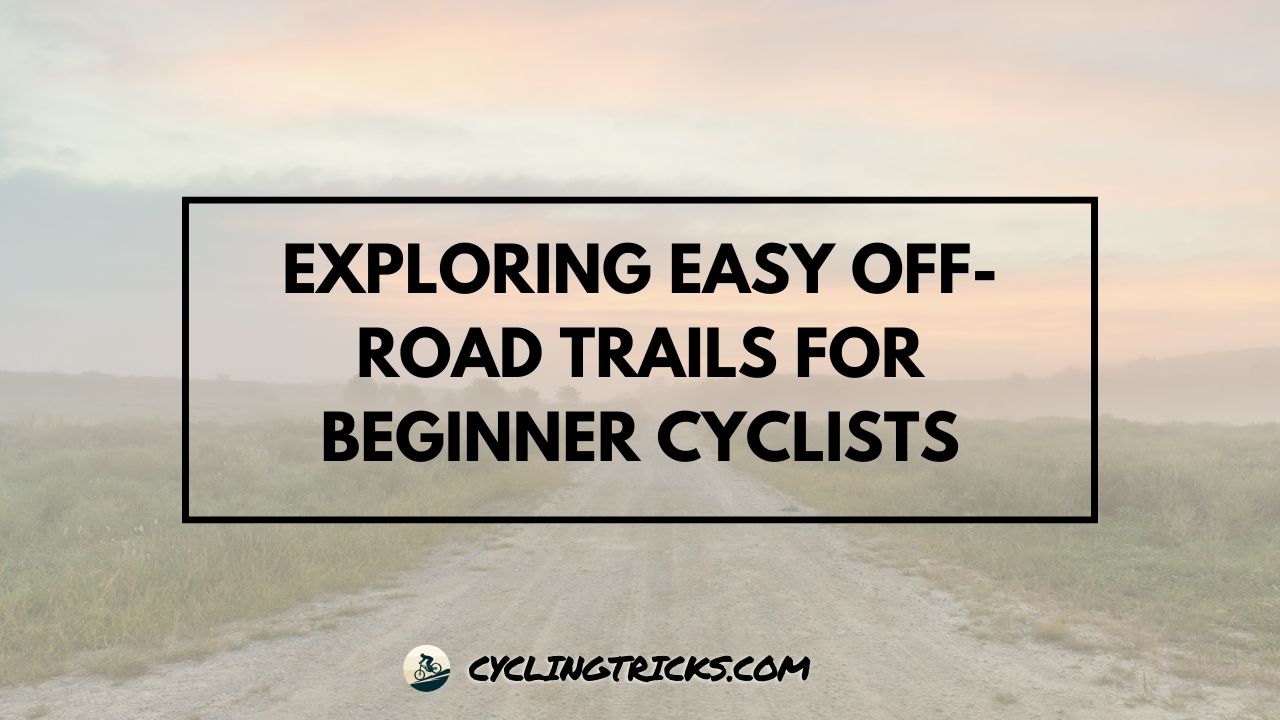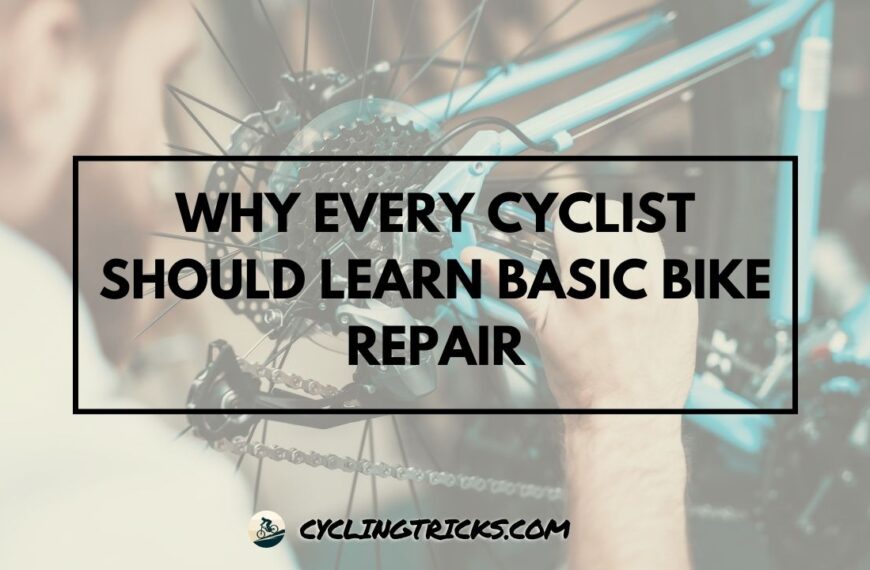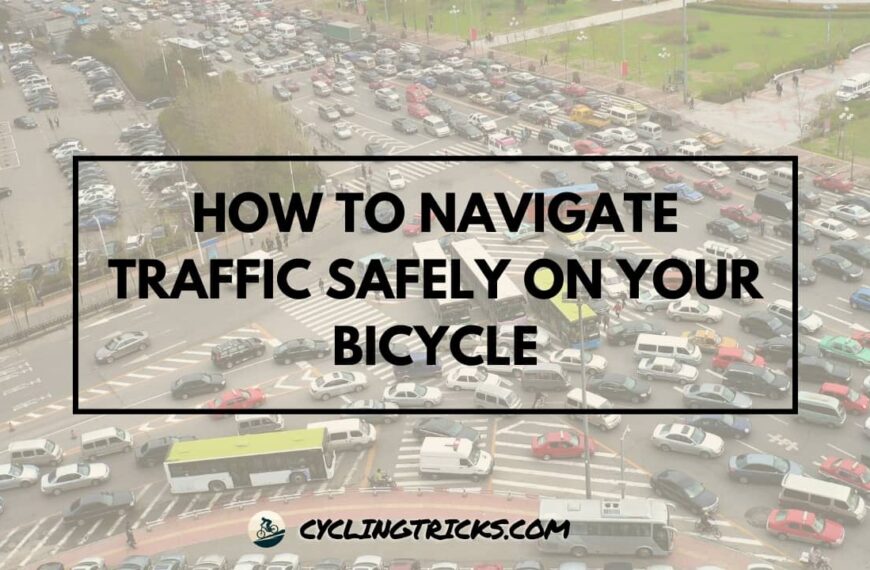As someone who has recently embarked on my own cycling journey, I understand the excitement that comes with discovering the world on two wheels.
However, it is important to remember that being a new cyclist can sometimes be daunting, especially when it comes to avoiding common mistakes.
In this article, we will explore the top mistakes often made by new cyclists and provide practical tips on how to avoid them.
You can make sure your riding experience is safe and fun by being aware of these problems and taking steps to solve them.
Common Cycling Mistake #1: Not Wearing Appropriate Safety Gear

One of the most crucial mistakes new cyclists often make is neglecting to wear the necessary safety gear. Your safety should be the most important thing, and you have to wear a helmet.
Helmets provide vital protection for your head and can prevent serious injuries in the event of a fall or accident. Other protection gear, like elbow and knee pads, can be bought along with helmets to add an extra layer of safety.
That being said, it is very important to pick safety gear that fits right and meets the necessary safety standards. When it comes to helmets, make sure they fit well, but not too well, and that the straps can be adjusted to fit your head.
When trying on other protective gear, ensure that they are comfortable and do not restrict your movements.
By selecting the right safety equipment and wearing it diligently, you can significantly reduce the risk of injuries while cycling.
Common Mistake #2: Neglecting Bike Maintenance

Proper bike maintenance is crucial for both optimal performance and safety. Neglecting bike maintenance can lead to mechanical issues, making your rides less enjoyable or even dangerous.
It is important to regularly inspect your bike and perform necessary maintenance tasks.
To help you stay on top of maintenance, here is a checklist of key tasks:
- Tire pressure: Check the tire pressure before each ride to ensure it is within the recommended range.
- Brake inspection: Regularly inspect your type of brakes and ensure they are functioning properly, as well as replacing brake pads when necessary.
- Chain lubrication: Regularly apply lubricant to the bike chain to reduce friction and prevent rust.
- Shifting gears: Check that your gears are shifting smoothly and make necessary adjustments if needed.
- General inspection: Inspect the frame, pedals, and handlebars (used for handling) for any signs of damage or wear and tear.
By doing regular maintenance on your bike and fixing any problems right away, you can keep it in great shape and make riding safer and more fun.
Common Mistake #3: Ignoring Traffic Rules

As a cyclist, it is essential to respect and follow traffic rules to ensure your own safety and maintain a harmonious coexistence with other road users.
It’s also very important to learn how to safely navigate in traffic. Ignoring traffic rules can put you at risk of accidents and conflict with motorists. You should know and follow the same rules as cars.
Some important traffic rules to keep in mind as a cyclist include:
- Stop signs and traffic lights: Always stop at stop signs and obey traffic lights, just like cars.
- Lane positioning: Use the correct lane, and if there are designated bike lanes, stay within them.
- Signaling turns: Use hand signals to indicate your intention to turn so that other road users can anticipate your movements.
- Visibility: Make yourself visible by wearing bright-colored clothing and using lights, especially during low-light conditions.
You can help make the roads safer and your cycling experience smoother and more fun by following the rules of the road.
Common Mistake #4: Incorrect Bike Fit
Having a bike that fits you properly is crucial for comfort, performance, and injury prevention. Riding a bike that doesn’t fit right can be painful, cause muscle aches, and even cause long-term injuries.
It’s important to make sure that your bike is the right size and that it fits your body perfectly.
To achieve a proper bike fit, here are some guidelines to follow:
- Correct frame size: Choose a bike with a frame size that matches your height and inseam length.
- Saddle height: Adjust the saddle height so that your leg is almost fully extended when the pedal is at its lowest position.
- Handlebar position: Adjust the handlebar height and reach to ensure a comfortable and natural riding position.
- Feet position: Position your feet correctly on the pedals and adjust the cleats if you are using clipless pedals.
If you’re not sure about how your bike fits, you might want to get help from a bike shop or a trained bike fitter.
Getting your bike properly fitted will make you more comfortable, protect you from getting hurt, and make your riding experience better all around.
Common Mistake #5: Overtraining
One common mistake that new cyclists often make is overtraining. While the enthusiasm to improve and push your limits is admirable, it is important to find the right balance and avoid overexertion.
When you train too much, you can get burned out, perform worse, and be more likely to get hurt.
Setting up a balanced exercise schedule is important to avoid overtraining. Start with realistic goals and gradually increase the intensity and duration of your rides.
Incorporate rest days into your schedule to allow your body to recover and adapt to the physical demands of cycling. Listen to your body and pay attention to any signs of fatigue or overexertion.
Additionally, incorporating cross-training activities such as strength training, stretching, and yoga can help improve overall fitness and prevent muscle imbalances.
By finding the right balance between training and rest, you can progress steadily and enjoy a sustainable cycling journey.
Common Mistake #6: Poor and Hydration
Adequate nutrition and hydration are key to maintaining energy levels, enhancing performance, and promoting overall well-being as a cyclist.
Not getting enough to eat and drink can make you tired, hurt you more easily, and lower your performance.
To ensure proper nutrition and hydration, consider the following guidelines:
- Pre-ride nutrition: As you perform a pre-ride bike check, you should also consider checking nutrition before biking. Fuel your body with a balanced meal or snack before heading out for a ride. Include carbohydrates for energy, protein for muscle repair, and healthy fats for sustained energy.
- During-ride hydration: Drink water or sports drinks regularly during your ride, especially on longer or more intense rides to replenish fluids and electrolytes.
- Post-ride recovery: Consume a combination of carbohydrates and protein within the first hour after your ride to aid in muscle recovery.
Also, pay attention to your body’s signs of hunger and thirst and make changes as needed. Eating a healthy, well-balanced diet when you’re not riding will also help your health and success as a cyclist.
Common Mistake #7: Not Being Visible
Visibility is crucial for a cyclist’s safety, especially when riding during low-light conditions or sharing the road with motorists.
Failing to make yourself visible can lead to accidents or near-misses. It is important to take proactive measures to enhance your visibility on the road.
Here are some recommendations for improving visibility:
- Lights: Use bright front and rear lights, even during daylight, to increase your visibility to motorists.
- Reflective gear: Wear reflective clothing or accessories, such as vests or ankle bands, to make yourself more visible to others.
- Proper lane positioning: Choose a lane position that is visible to motorists and allows you to see and be seen. It is one of the cycling etiquette that we have already discussed on our blog.
By prioritizing visibility and taking these precautions, you can greatly reduce the risk of accidents and ensure your safety while cycling.
Common Mistake #8: Riding Without a Plan
Having a cycling plan can provide structure, motivation, and a sense of achievement to your rides. Riding without a plan may result in aimless cycling or stagnation in your progress.
To get the most out of your bike trip, set goals and keep track of your progress.
To create a cycling plan:
- Set clear goals: Determine what you want to achieve, whether it’s increasing your endurance, improving speed, or completing a specific distance.
- Establish a schedule: Plan your rides in advance and allocate specific days for different types of training, such as long rides, interval training, or rest days.
- Track your progress: Use a cycling app or a journal to record your rides, track your mileage, and monitor your progress toward your goals.
You will stay focused and inspired on your cycling trip if you have a plan. You will also be able to see where you are going.
Conclusion
Before you start riding your bike for the first time, you should know about the mistakes that most new riders make.
You can avoid these problems and have a safe and fun cycling experience by:
- Keeping your bike in good shape
- Following traffic rules
- Making sure your bike fits the right
- Not overtraining
- Eating right
- Staying hydrated
- Being visible on the road
- And having a plan.
Don’t forget to stay responsible, take care of yourself, and keep learning how to ride a bike.










